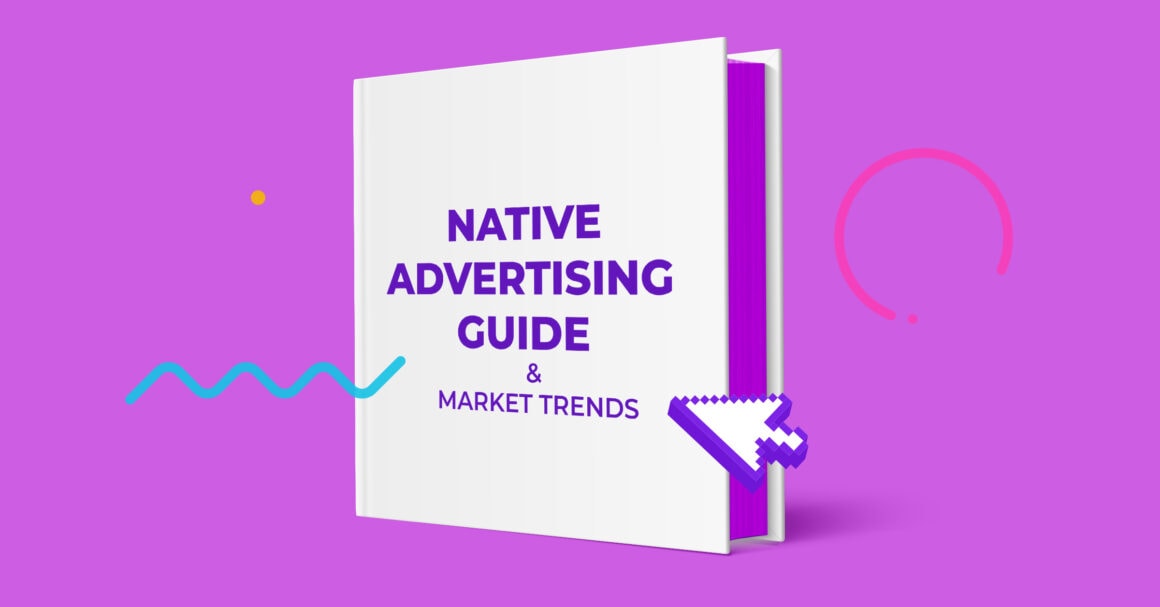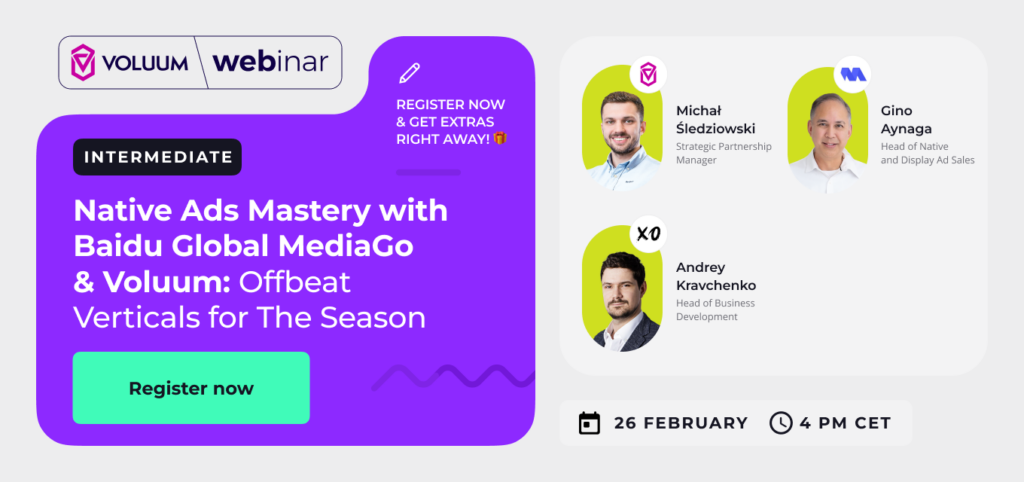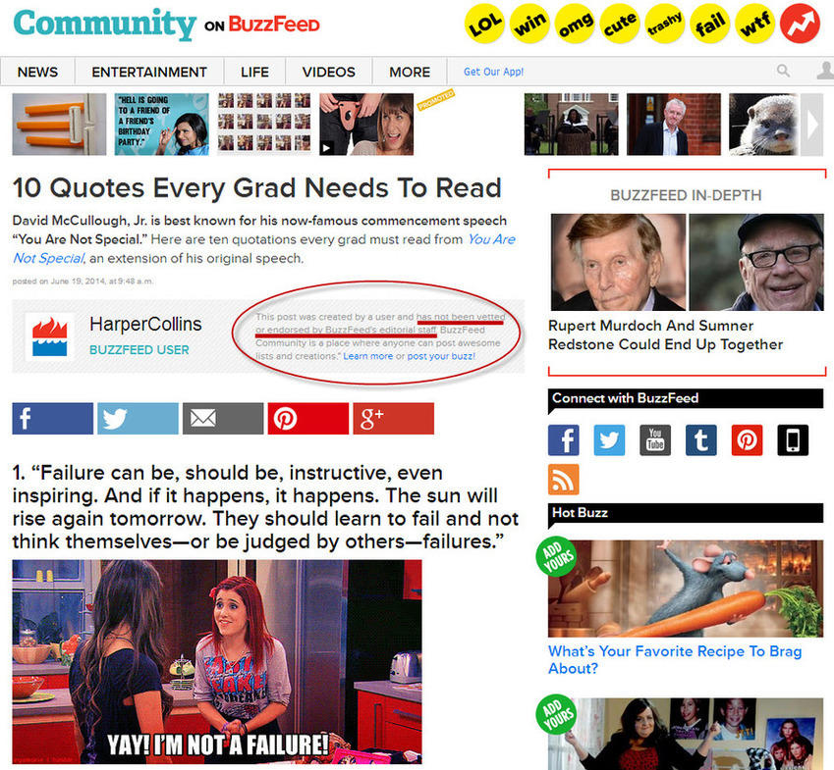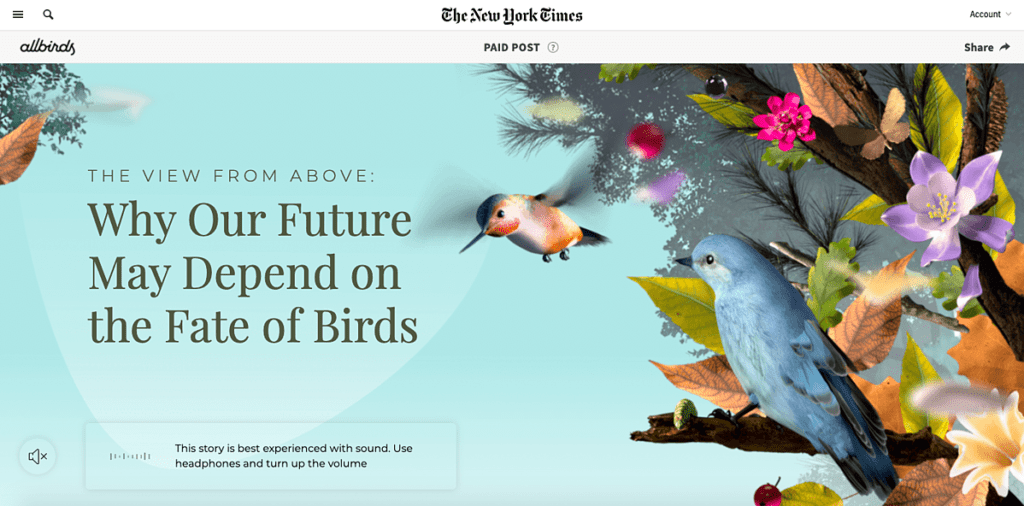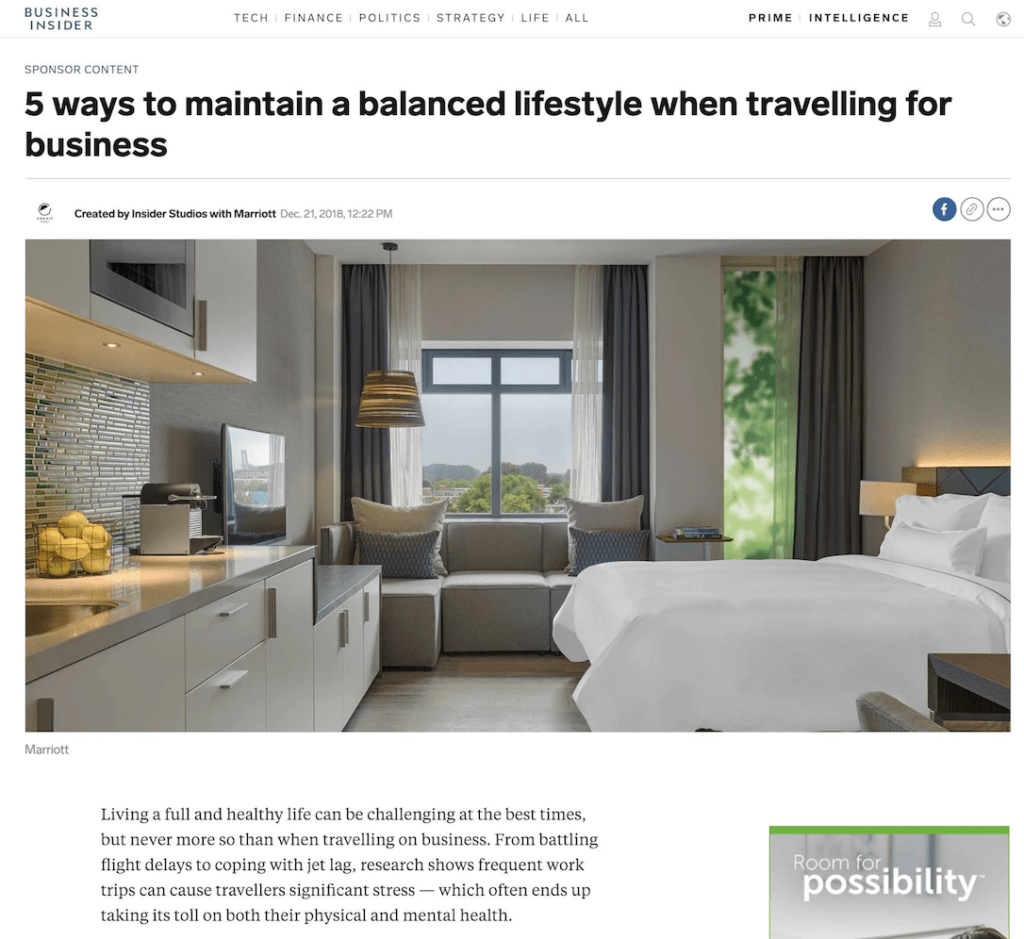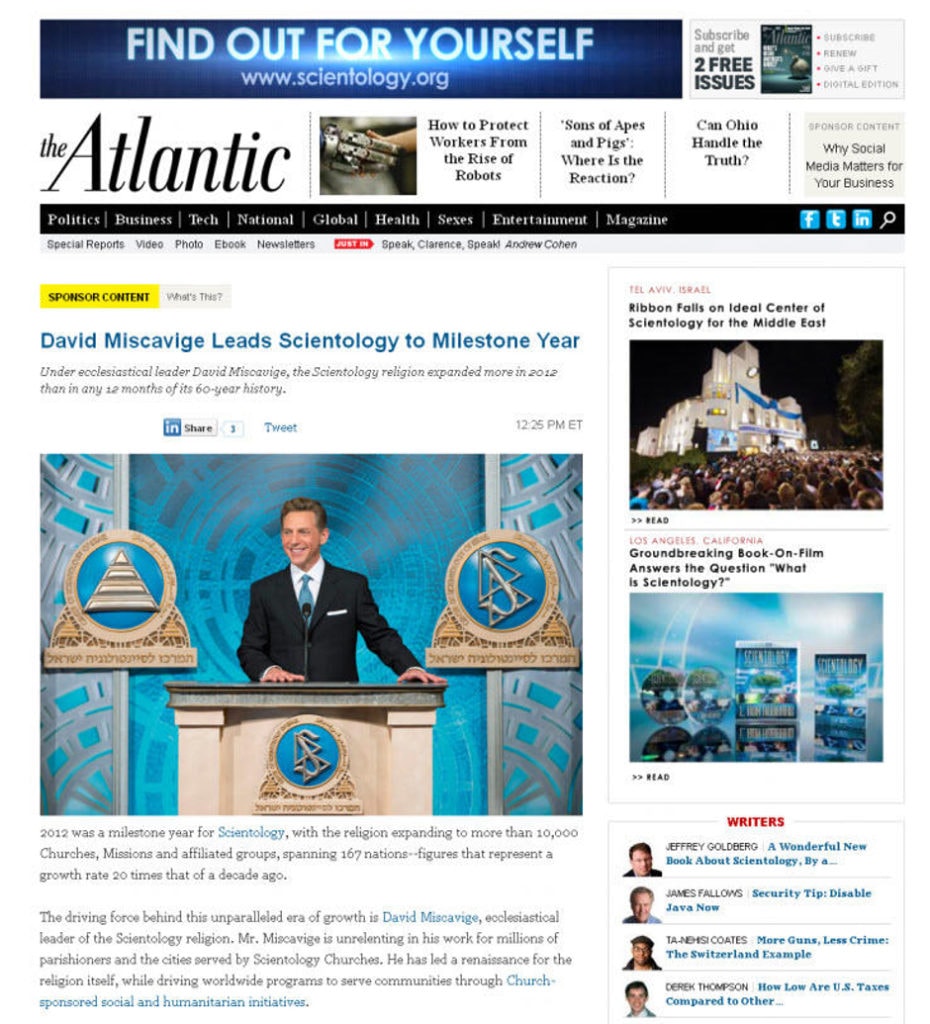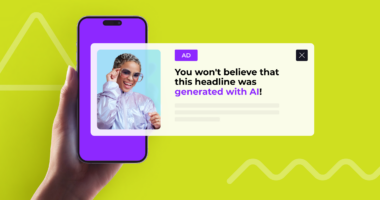Native ads are hot: they look great, convert easily, and you have a whole range of platforms to advertise on. It doesn’t matter if you’re relatively fresh to digital marketing or if you’re a seasoned performance marketer – this native advertising guide will boost your advertising strategy.
Whether you are running affiliate, performance, or ecommerce marketing campaigns, this style of ads is your easiest ticket to passive income.
In fact, I’m certain you’ve even experienced it first hand while browsing the web. And if you haven’t noticed them, well, that’s the magic of native ads 😉
This handy guide discusses some of the most essential definitions, best practices, and industry trends, all with the goal of helping you create a successful ad campaign from the ground up. Let’s start with the basics!
What is Native Advertising?
Native advertising is the new black! It can be simply defined as ads that don’t look like ads. Basically, it’s a type of advertising that matches the form and function of the platform that it appears in. Its design, layout, as well as message aligns with the organic content surrounding it in order to blend in. Such ads can be found everywhere, from your favorite websites to your frequented social media channels. The chances are pretty good that, even though you may not have realized it, you have already seen several examples of native ads.
The 5 most known types of native advertising formats are:
In-Feed Ads
Hands down, in-feed ads are the most famous and powerful form of native advertising. Such ads are placed between articles and content feeds and allow readers to consume them naturally, with little effort. They don’t yell campaign slogans at the audience and in fact, don’t disrupt the user experience. As you have probably noticed, in-feed ads are widely used by large social media platforms like Facebook, Linkedin, or Twitter. Log into your account and see for yourself!
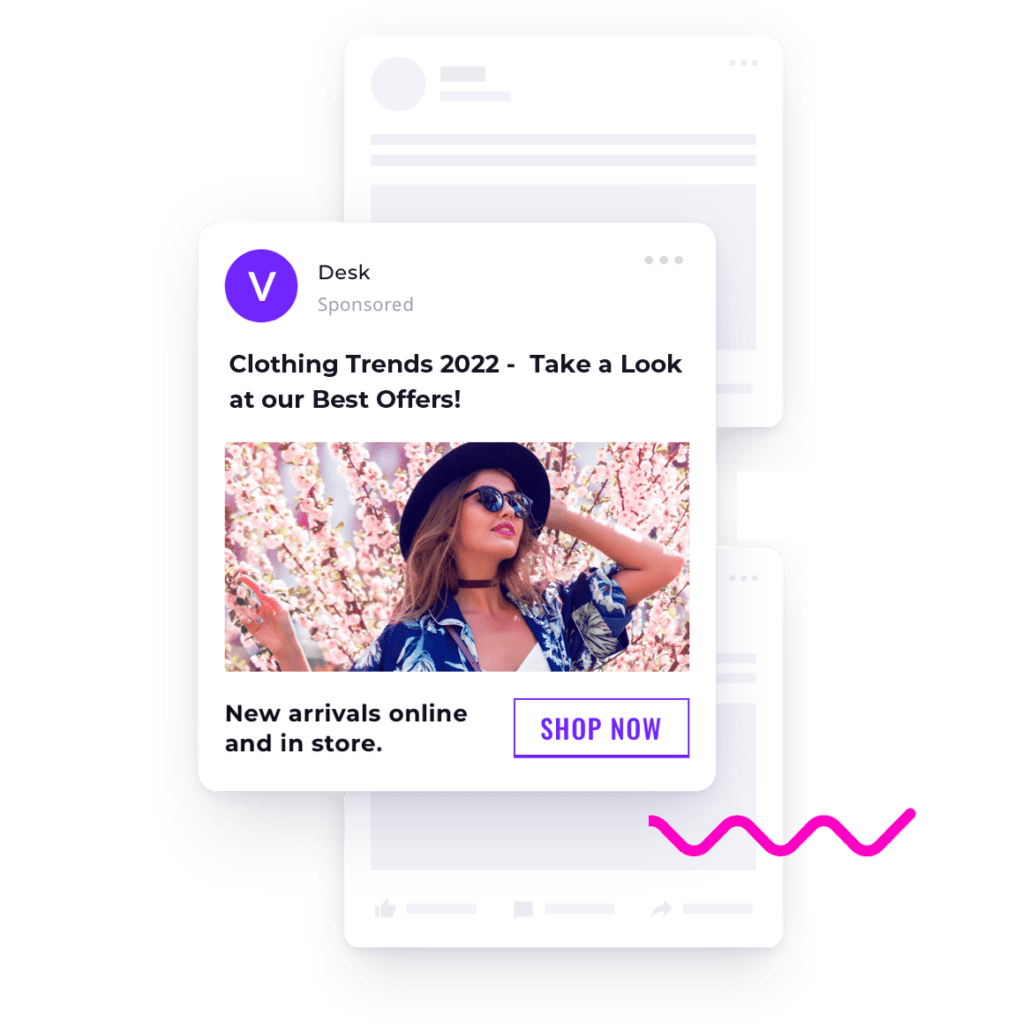
In-App Ads
In-app native ads simply blend into the look and feel of the underlying app environment. Such ads mimic the characteristics of an app font, shape, or graphic style and as a result, are perceived as a welcome suggestion or advice. Interestingly, in-app ads are likely to be viewed three-times more frequently than banner ads. Moreover, with a high chance of sponsored content being liked, shared, and reposted, the user engagement level of mobile native ads can be 20 to 60% above average.
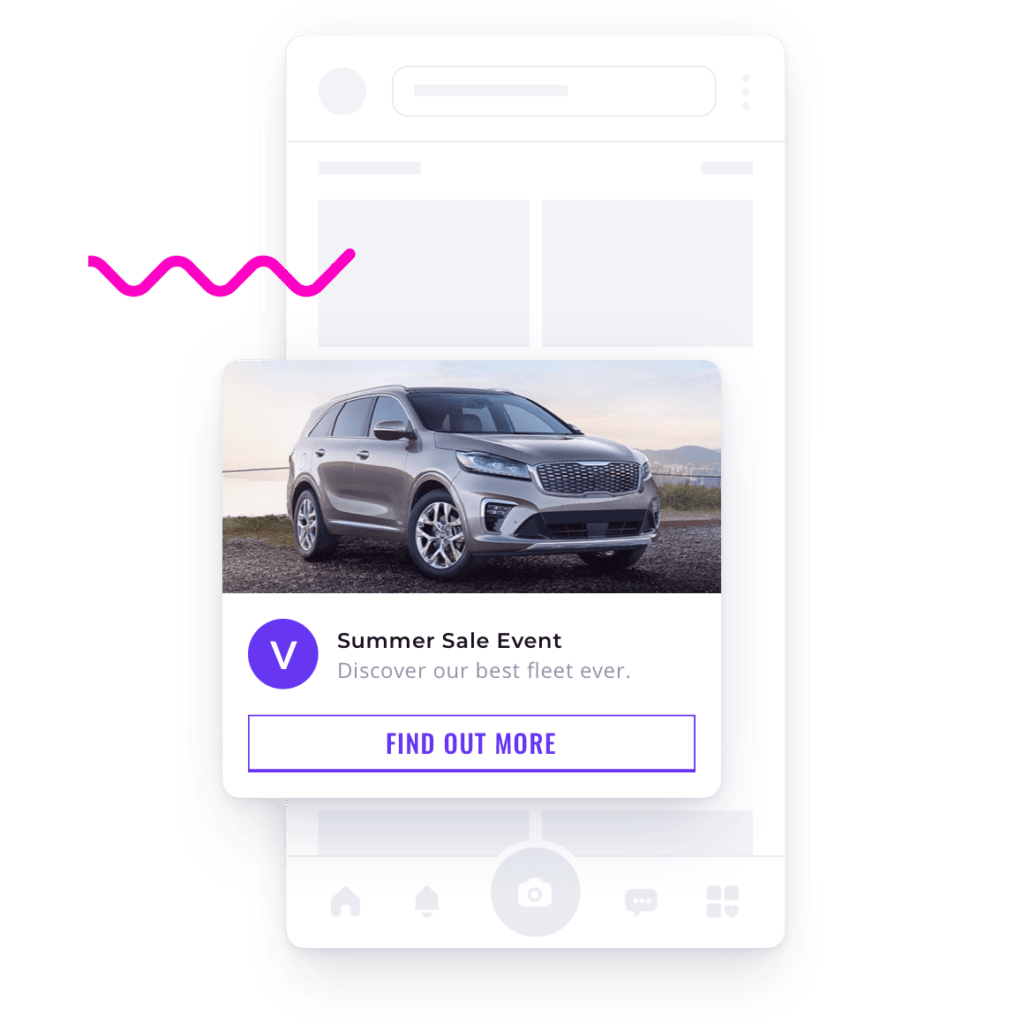
Content Recommendations
While in-feed ads are generally couched within a publisher’s content feed, content recommendation widgets (also known as discovery ads) are almost always found along the bottom of a given publisher site. Labeled as “recommended for you”, “you also might like”, “you might have missed” or “from around the web”, they cleverly imitate real referrals from a webpage.
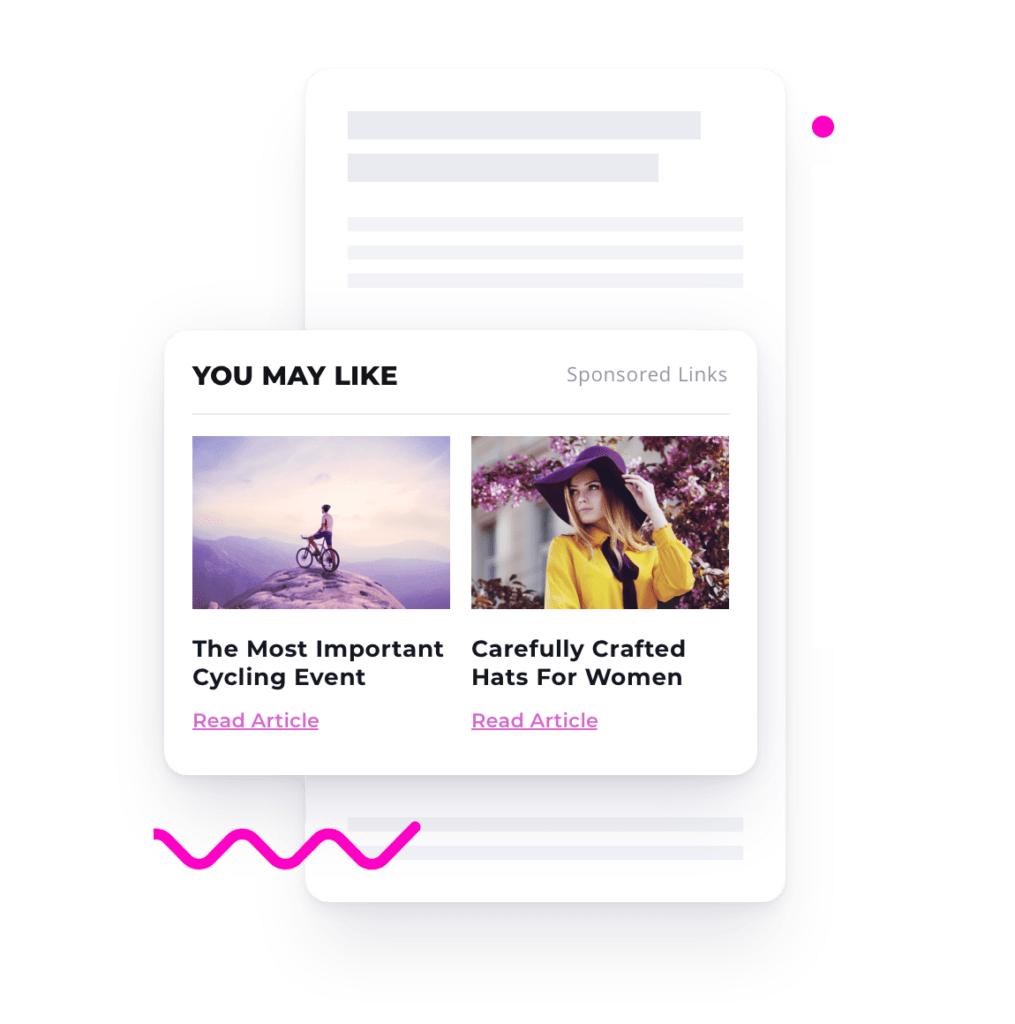
Sponsored Ads
Typically branded or sponsored content is represented by articles, created in partnership between advertisers and publishers. Once in a while, such content is created by the advertiser and just posted on the publisher’s site. However several big websites have editorial teams dedicated to taking care of the content preparation, so it not only looks like the publisher’s content, it sounds like it too. Generally, the content itself is a part of the native ad buy and can be promoted by In-Feed Ads or Content Recommendation Widgets.
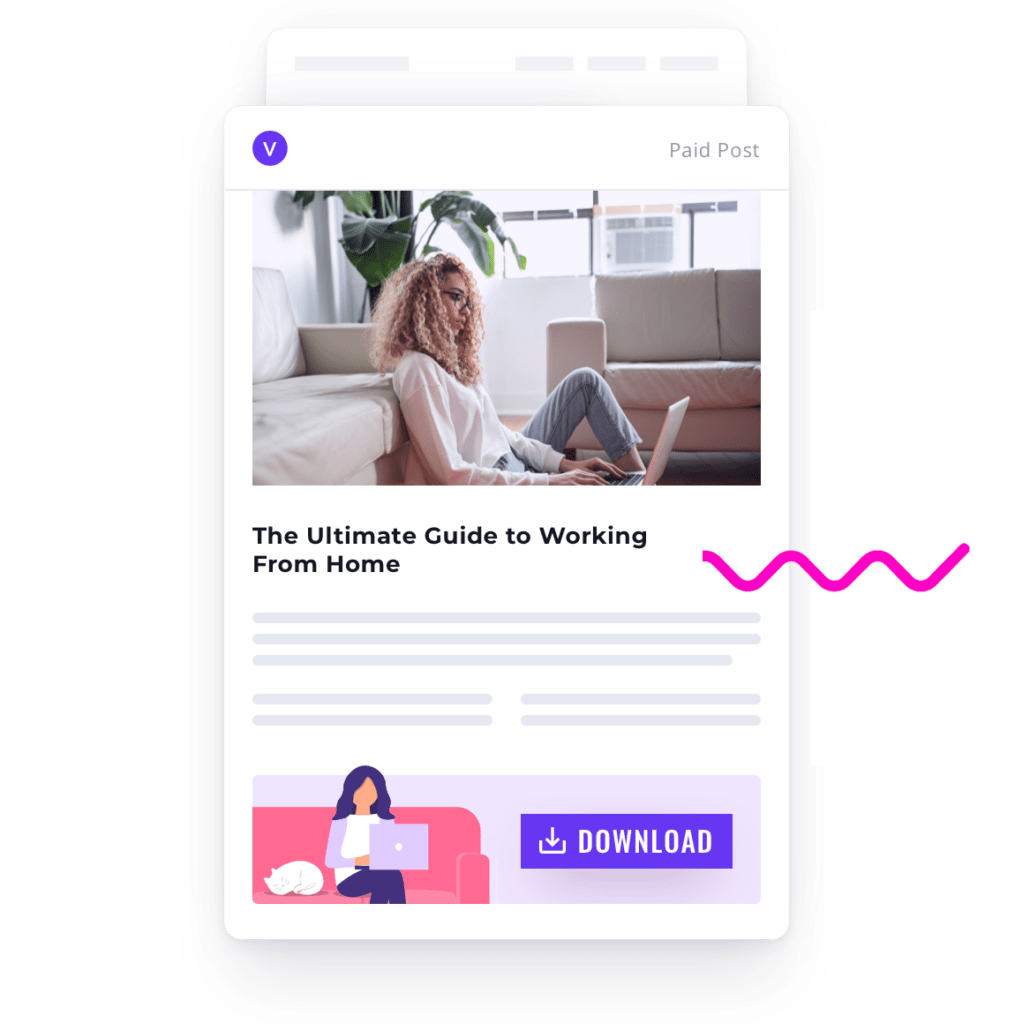
Email Widgets
Native email widgets fit seamlessly into the content promoted by the publisher’s email newsletters. With people spending nearly 20 minutes of every online hour in email, this native ad format is an essential addition to any digital media strategy. Additionally, email widgets help to eliminate impression waste, as the ad is served only when a user opens the email.
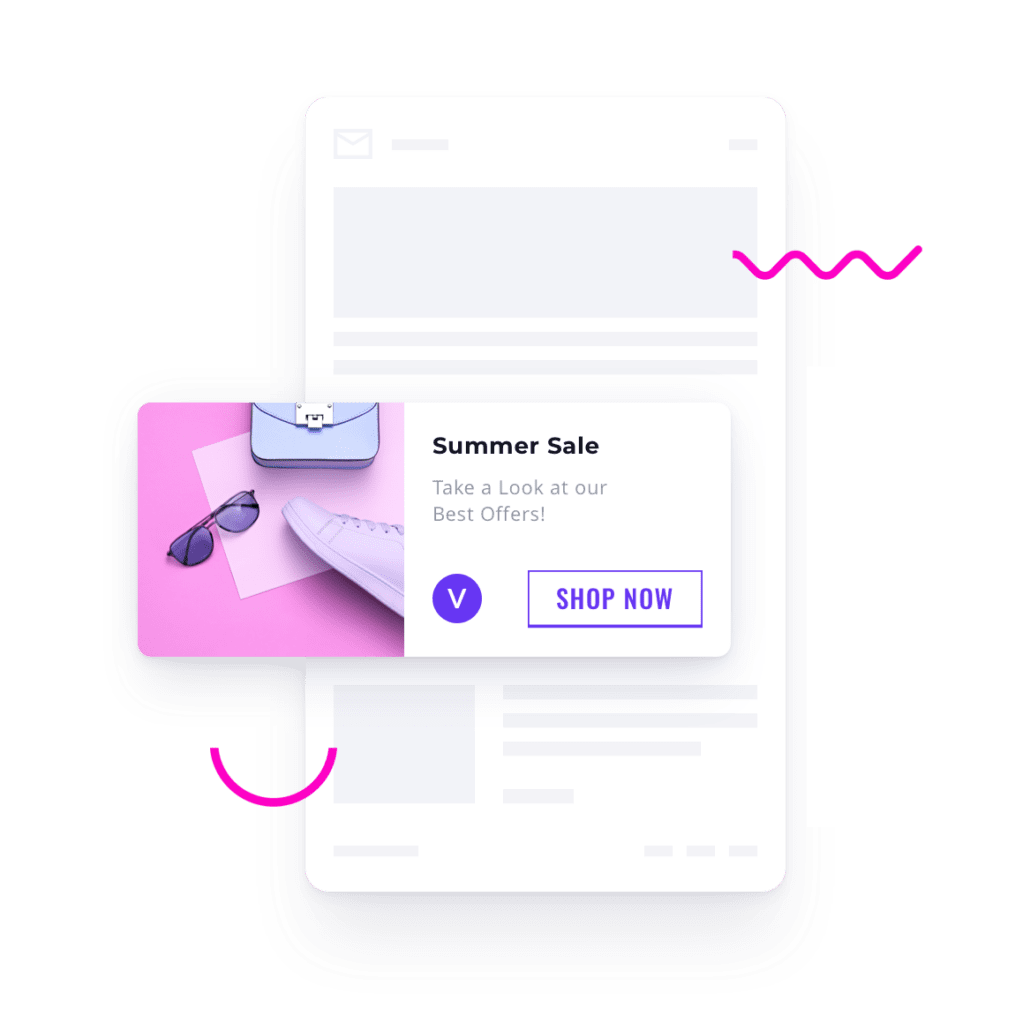
Why Does Native Advertising Work?
If you’re still unsure whether native advertising could be the right path for your business, then you definitely need to look at the stats below:
- By 2025 the native ads industry is predicted to reach $400bn globally, and $139.5bn in the US.
- Native ads receive 53% more views than traditional display ads.
- These ads increase purchase intent by 18%.
- Native display ads produce a CTR 8.8X compared to typical banner ads.
With these numbers in mind, it’s time to check out the most significant benefits of native advertising:
Better Control
Advertisers as well as publishers typically don’t have a way to determine where their adverts are going to be displayed and at what time. Native ads give them better control over the ad placement process, as they can choose where the ad will be viewed and by whom. Such ads offer a happy medium. The advertiser is able to stay in control of the content, whereas the publisher can ensure the message and response is exactly what they want.
Attention Grabber
Native advertising captures audiences’ attention mainly due to its seamless, very soft promotion approach. Basically, the goal of the ad native format is to contribute in a way that doesn’t disrupt the user experience. The point here is that such ads should be helpful, interesting, and highly relevant to viewers. Many studies have shown that even though people are usually aware the content was sponsored, native advertising gets higher engagement rates than traditional advertising methods. Why? Mainly due to the high-quality content that can be consumed in a way that is natural as well as intuitive to a viewer’s usual media consumption.
Customers Feel Empowered
Simple as it is, most online users are searching for solutions to their problems, not products or services. They want to understand how your product meets their needs and why you’re offering the right solution. By using native advertising it’s easy to present branded content in a subtle and convincing way that provides valuable and, most importantly, empowering information to customers. Not to mention that satisfied buyers will reward you for this effort with their trust and loyalty.
I know, the idea of your target audience promoting your ads may seem like a dream, but with the help of native advertising it’s possible. Believe me. Since native ads are often more content-based than regular display ads, they have great chances of going viral. Based on the research, around 32% of people said they would share native ads with their friends or family, compared to 19% for banner advertisements. Native ads give advertisers a chance to sell their product or service while adding more value, insights and details to the process. In fact, they can also increase brand awareness in a relatively organic way.
Millennial’s Friend
As stated by IAB, around 80% of millennials see in-feed native ads as a favorable user experience and 58% believe that publishers should limit advertising to native only. Such ads not only provide trust, but also create gripping conversations, together with authentic experiences – and that’s exactly what the millennial population is looking for.
Device Responsive
Since native ads are displayed as part of the organic content, they are absorbed in the exact same manner. That means that you don’t have to make any platform-specific changes to your ads between desktop and mobile. Native advertising adjusts to different devices, which not only saves you time, but also greatly increases your reach given mobile’s popularity.
Ad Blocker’s Buddy
Finally, yet importantly, due to the strong focus on customer experience, native ads work as a solution to ad blocking. Good ad blockers may still detect them, however, since the readers have a choice whether they want to block the ad or not, they’re likely to be in favor of leaving such content thanks to its relevance.

Branded Content and Native Advertising: What is the Difference?
Many marketers still mistake native advertising for branded content (also known as content marketing). Both tactics have the same fundamental goal which is to promote products or services without looking like an advertisement. However there is also a crucial difference when it comes to approach, cost and delivery.
Although native advertising isn’t as upfront and in-your-face as traditional methods, at the end of the day consumers are still being sold a product or service. In contrast, the goal of content marketing is to build brand awareness and trust over the long term by providing relevant, useful information.
With native advertising, marketers pay publishers to slip their ads among the non-paid content. These ads are then guaranteed to land in front of as many people as the advertisers pay for and after that, they’re removed. It’s definitely a quick way to guarantee a certain outcome. Comparatively, content marketing has less concrete results. It typically takes longer to land in front of an audience. Businesses that use branded content create at least one-year-long campaigns. During that time they strive to distribute outstanding, high-quality content that draws potential customers back to the company’s website.
Wondering which strategy is more effective? Unfortunately, there is no right answer. When making a decision you should always take into consideration your goal, audience insights and most importantly your budget.
Native Advertising: Good Examples
For a performance marketer this seamless advertising method is an ideal marketing strategy – of course, you’ll need the right targeting, creatives, and landing pages. You won’t discover these perfect combinations in your first try – even if you’re a pro. Trust me. It’ll take some time and testing. And that’s where essential tools like ad trackers have a role.
Before I get into the specifics, let’s go through some real-life examples of what to do and what NOT to do when it comes to native ad campaigns.
BuzzFeed – Harper Collins
In its own way, BuzzFeed pioneered native advertising. The example below shows an ad promoting a book publisher – HarperCollins. The company used a Buzzfeed listicle headline to keep in line with BuzzFeed’s usual articles. Along with the headline, they used the classic GIF visuals that BuzzFeed readers eat up. The time of the article posting was also planned well with many school graduations happening in June.
This advertisement seamlessly blends in. Moreover, the article’s advertising nature and its connection to HarperCollins as a brand is only mentioned at the top between the headline and the beginning of the post. Most viewers would ignore this area of the page and direct their attention straight to the beginning of the article anyway.
The New York Times – Allbirds
A great example of native branded content can be a New York Times article, sponsored by the shoe company called Allbirds. Why is this ad so effective? Basically, Allbirds decided to look beyond the product and inform the readers about a worthwhile cause – birds and how they are at risk with climate change. After clicking on the ad, the reader is taken to the article page with excellent animated graphics, perfectly aligning with the NYT design.
Business Insider – Marriott
This Business Insider article (and native ad) presents valuable and useful advice for business travelers, who make up a significant percentage of the readers. Overall the content is not very promotional, but rather informative. Only at the end does the author include a soft call-to-action promoting Marriotts Element hotels.
The Bad and Shameless Native Advertising Examples
So, you saw native advertising at its best. Now it’s time to discover the most shameless native advertising example.
The Atlantic – the Church of Scientology
Well, not all native ads efforts are as successful. Just take this digital-ads scandal published on The Atlantic promoting the Church of Scientology. The Atlantic quickly took down the article, but not before many copies were spread by the major news sources like Gawker and Business Insider.
Sponsored articles are all over online magazines now. It’s understandable, since paid memberships are hard to come by. However, allowing obvious propaganda from a notoriously dangerous cult is a magazine’s shortcut to becoming an unreliable source of information. As you can imagine, an untrustworthy news source won’t survive long. The Atlantic was mocked endlessly after this unfortunate incident.
Yet, what’s bad for them is good for us though, because we can avoid their mistakes.
How To Measure Native Ad Campaign Effectiveness?
Measuring the success of your online advertising campaigns can at first seem almost bewildering. There are no set and fixed values for what numbers signal profitability. Everything depends on the factors like campaign’s budget, setup, volumes of available traffic, just to mention a few. Below you’ll find a list of the most crucial metrics to follow.
CTR (Click-Through-Rate) – shows how attractive your offer is to your audience. In other words, how many users have clicked on the ad after viewing it on a landing page.
iCTR (Impression Click-Through Rate) – shows how attractive your ad is to your audience. So, how many users have clicked on the ad after viewing it on a publisher’s site.
CR (Conversion Rate) – shows the percentage of people who converted (performed the desired action) after engaging with your ad or a landing page, versus the number of all clicks. Including those that brought conversions and those that didn’t.
ROI (Return On Investment) – shows the percentage of the money you earned as a fraction of the money you have invested.
- If ROI = 0% then you’re even, meaning you haven’t lost any money, but you also haven’t earned any.
- If ROI is higher than 0% then you’ve made profit and earned some money. For example, if ROI = 150%, you have earned 50% more money that you have invested in running your campaigns.
- If ROI is lower than 0% then it means that you have spent more money than you have earned.
EPC (Earning Per Click) – a special metric that shows the average revenue for a single click on your ad.
EPV (Earning Per Visit) – an indicator of how much revenue each visit to the website brings.
Usually however, the analytics you’re going to get from your ad platform or traffic source will not be very in-depth, reliable or accurate unfortunately… and that’s a pretty big issue. Because if you don’t know the exact data on how your ads are performing, how much of your budget is going into your campaigns, then you might as well be throwing cash out the window.
Sounds harsh, I know 😉 but as you may or may not know, performance marketing is a numbers game. You’re either winning or losing, not much of an in-between. If you’re losing, that’s not necessarily a problem, because you can learn from failed campaigns: what needs a simple tweak, what needs an overhaul, and what needs to be abandoned. But again, if you’re not tracking then you don’t know where that campaign is on the scale of profits. As I’ve mentioned before, an analytics and ad management platform like Voluum is going to take care of this for you.

How to Make Performance Marketing Work with Native Advertising
Ok, you know the basics. Let’s get down to business! As you can see from the examples above, the landing page and offer you advertise need to match the traffic sources you’re advertising on. But that’s not all. You’ll need to make sure you have the following things ready before starting your first digital marketing campaign:
- The right offer from the right affiliate network;
- The traffic source best-suited for your offer vertical;
- The best creatives and landing pages to match your offer;
- Find the target demographic that performs and optimize campaign settings;
- The mindset to spend a little to make a lot.
1. Choose Offers Specific for Native Advertising
No clue what you want to promote? When choosing your niche, it’s always a good idea to either follow your interests and passion or to listen to the people. What do people really want? What sort of services or products are people looking for? Think about it for a minute!
Sounds pretty simple, right? Well, you should keep in mind that not every offer will work nicely with native advertising. Your successful banner campaigns running offers with low payouts may be profitable now, but the cost comparison isn’t the same on native. You’ll want to find offers with moderate to high payouts with an easy-to-target audience.
For example, the following niches consistently perform well:
- Health and Beauty
- Trading, Binary, and Financial
- Gambling
- Dating
Health and Beauty
Weight loss and skin care or generally body care products perform great on native ads because customers have higher intent to purchase when seeing these ads next to the related articles.
The most obvious ways to market these products are to target the users searching for “How to” articles on losing weight or improving their skin. Once they’re reading the articles you’re advertising on, half of the work is done. You’ve got a user who’s looking for a way to look slimmer and younger – you just have to convince them your product is the answer.
Health and beauty products also speak to the larger community. Everyone wants to look better and feel better, regardless of gender and age. This is where eye-catching creatives like “Before and After” pictures prosper. Even when a user is browsing the web for an unrelated topic, good health and beauty creatives catch their attention and change their focus to the universal desire to look good. With proper landing page design and convincing content, conversions are an easy catch.
Not a lot of offer verticals have the flexibility of targeting both granular and broad audiences. If you’re still looking for a vertical to start with, this may be the way to go. Just be aware that the competition is high and offers wear out quite fast.
Trading, Binary, and Financial
As a digital or affiliate marketer, you can understand the pursuit of passive income. Trading, binary, and financial products promise exactly this. Luckily, the pursuit of passive income is extensively marketed by Youtube and Social Media influencers at the moment.
That means the part of selling the advantages of trading and binary is sometimes already done. If you’re not the gambling type, you can stay safe by running native on finance, binary, and trading affiliate websites or forums. Well, bear in mind that this target group is quite tech-savvy and tend to be suspicious of digital advertising. In fact, you should stay away from empty promises and provide only valuable and transparent information. Also, follow investment industry trends to optimize the performance and placement of your native ads.
If, however, you have insight on well-performing creatives and great landing pages, you can run these ads on non-finance related sites and apps as well. Payouts for financial offers are usually higher, which means getting users might be more difficult. However, once you get the conversions, the revenue is also more substantial.
Gambling
Did you know that the global online gambling market is predicted to be worth around 92.9 billion U.S. dollars by 2023? Crazy, right? No matter the amount, winning money online is an accomplishment. Psychology studies have shown that even “small victories” create a sense of accomplishment which releases endorphins in the human brain. Yep, we all love the thrilling feeling of luck and victory.
Gambling offers vary from online casino games such as roulette, online poker, slots, lotteries to betting such as sports betting, bingo and fantasy sports betting. The variety is huge! Once you’re set on the offer you want to run, don’t forget to check if it’s allowed by the geo you’re planning to target. Government regulations may differ even from region to region within a country.
Furthermore, keep in mind that when it comes to sports betting – timing is everything. Timing sports-betting campaigns with major events like FIFA or the Super Bowl in combination with demographic targeting can bring incredible results. Certain affiliate marketers only run sports-betting campaigns all year round and switch the advertisements based on the type of sports that are in season. Sport lovers find gambling ads extremely attractive. Can you imagine turning your hobby into business? Sounds pretty amazing! If you’re interested in getting a deeper understanding of the topic, check out our iGaming and gambling guide.
Dating
Hands down, dating is one of the most evergreen verticals in the online industry.
Why? Love is in the air! People constantly change their status all over the globe and seek new adventures. In this day and age, you’re much more likely to meet your next partner online than through your family or coworkers. On top of that, such offers, similarly to “health and beauty”, appeal to a wider audience.
There are various approaches to monetizing users in the dating industry. The most popular ones are: membership subscriptions (require users to pay a fee to use a dating website or app) and freemium (allow users to sign up and use the basic functionalities of the website or app for free, while the app generates shared revenue).
When it comes to ad elements, performance marketers and media buyers usually use more inventive visuals to elicit interest and add landing pages with good content, images, and product reviews to send their sales pitches all the way home. Depending on the strictness of the traffic source, creatives can get pretty revealing, which is one of the many magic tricks that get dating affiliate offers to work.
eCommerce
According to eMarketer, eCommerce sales will reach 19.2% of all US retail spending in 2024. It’s not a surprise – eCommerce makes purchasing faster and easier, without the hassle of crowds or awkward social interactions. The ability to find the desired product or service with a single touch or click has transformed buying behavior, encouraging instant gratification and what’s more important, boosting eCommerce transactions.
With eCommerce there is a huge variety of products and services to choose from. Believe me – you’ll never be out of options. Clothing and accessories, consumer electronics, pet supplies, entertainment, home improvement, just to mention a few. For sure you’ll find something interesting.
At the same time, you should bear in mind that the success of certain ecom offers may be very short-lived, quite often due to their expiration date. Particularly during the shopping-frenzy season like Thanksgiving, Black Friday and Cyber Monday, and of course all-mighty Christmas.

If none of these inspire you, check out our compilation of the top niches and verticals.
2. Run Your Offers on the Right Native Ad Networks
So you’ve chosen the offer vertical you want to run. What’s next? As we discussed earlier, offers that worked in your past campaigns with other ad types won’t necessarily work with native advertising. In the same way, offers that are successful on one native ad network won’t necessarily share success in another.
Keep in mind that the bigger players like Taboola or Outbrain are generally a good place to start, however, testing content performance on smaller networks can allow you to achieve lower CPMs at higher conversion rates if your campaigns are correctly targeted, built, and optimized.
If you’re at a loss where to get started, take a look at this guide on choosing traffic sources.
3. Get Creative with your Creatives
Native advertising creatives are not just images. They include several elements, such as headline, description, call to action, icon etc. All these pieces are recognized as being a part of the same puzzle. That’s why it’s super important to make sure that they all fit together – otherwise your audience will walk away confused. Wondering what you can do to prevent this from happening?
When producing any advertising copy, you shouldn’t rush; stop for a moment and first think about the end goal. Without knowing what you’d like to achieve, it’s almost impossible to create effective copy. Each offer will have a particular objective, such as a purchase, sign up for a newsletter, or free trial. This final action will acutely define the ad creation process.
If you feel like you need assistance in writing so much copy – use generative AI services. ChatGPT, Google Bard or Microsoft Bing are just waiting for you to enter the correct prompt and start creating copy.
One of the most crucial performance marketing best practices is to figure out what key challenges your niche market is facing, and then focus your ad copy exactly on that. Educational and insightful content performs the best. Not to mention that you should try to keep the creatives personal and natural. Simply, when readers feel as though the content is aimed directly at them, they’ll be far more likely to engage with it and convert.
Apart from the common best practices, here are a few extra tips you’ll need to follow to make the most out of your native ads:
- Whether you are using stock images or hiring a photographer, make sure you’re using properly sized and cropped images.
- Use unpolished imagery, your ads should look like other editorial content on the websites that you advertise on.
- Test 5-10 variations of very different imagery, various angles, contexts, and content.
- Keep your headlines short at 30-45 characters and avoid going over 60 characters.
- Put your main, or most appealing, point at the beginning of the headline.
- Add a landing page, it’ll give you the opportunity to boost engagement rates and encourage the desired action once a potential customer has clicked on the ad.
- Check whether your CTA is visible by positioning it front and center and making the rest of your content uncluttered.
If you’re a seasoned media buyer or affiliate marketer, you know all about using creatives for A/B testing, spying on competitor ads, and stretching the limits of compliance to get the highest CTR possible.
Voluum tracker equips you with the ability to easily optimize your campaigns by creative in our reporting panel. Basically, you don’t have to run campaigns the old fashioned way and look through your excel sheets to find which campaigns match which creatives.
4. Find the Target Demographic for your Native Advertising Campaign
Now, it’s time to get to know your audience better. The better you understand your target market, the more you’ll be able to focus your ads and reach the users most likely to convert into customers. Not sure how you should do it?
Continually evaluate the following factors using either an ad tracker or the basic analytics provided in your ad platform or traffic source:
- Ad Exchanges
- Affiliate Networks
- Browsers
- Geo
- Creatives
- Landers
- Sites
- Language
- Site Content
- Widget Id
If you can, try to dig deep into this data as granularly as possible.
5. Spend a Little to Make a Lot
Great, your campaign is live, but the game has just begun.
It’s essential to monitor your ad campaigns to ensure they’re achieving your goals. You need to know early and often, how your native ads are performing. Just bear in mind that before you start optimizing, you need to get some data. It’s your ever-present friend.
Whenever you launch a new campaign, it’s highly recommended to start with broad targeting first and run a RON (Run of Network) campaign.
Once you start buying it all, you’ll be able to start testing for the best-performing placements. Just be prepared to spend no less than $500-1000 on your tests.

Native Advertising Trends: What the Future Holds?
According to the eMarketer forecast, by 2020, over 88% of native ads in the US will become more mobile, up from around 85% in 2018. On the other side, the share of native advertising that comes from social slightly declined from 76.7% in 2018 to 73.5% in 2020. With this trend, the non-social native ad technology players will benefit the most.
On top of that, in this day and age, native video ads are getting more and more popular. There’s no denying that videos are an integral part of the internet today. They offer a unique ability to illustrate complex concepts and to achieve an emotional connection with the audience through storytelling. Based on the forecast, digital marketers have spent over 38% of their US digital video ad budgets on native advertising formats in 2020.
The Bottom Line
It’s the classic saying: do a little to get a lot.
The pursuit of passive income doesn’t come easy. If it did, there would be way more media buyers and affiliate marketers sitting in Thailand sipping Mai Tais after running their first digital marketing campaign.
Instead, the majority of entrepreneurs drop off after their first few weeks because they expect ROI to be positive at the start. Like in every industry, without hard work and discipline it is difficult to make money and become a top professional.
Some verticals have higher ladders to success but have more scalability and potential to give you a full-time passive income. Other verticals bring smaller risks but also require more attention to optimization and deliver smaller wins. But, the key to any success is learning from your mistakes and experience – and the only way to do that is with a reliable, accurate and accountable ad tracker.
No banner with provided ID found
